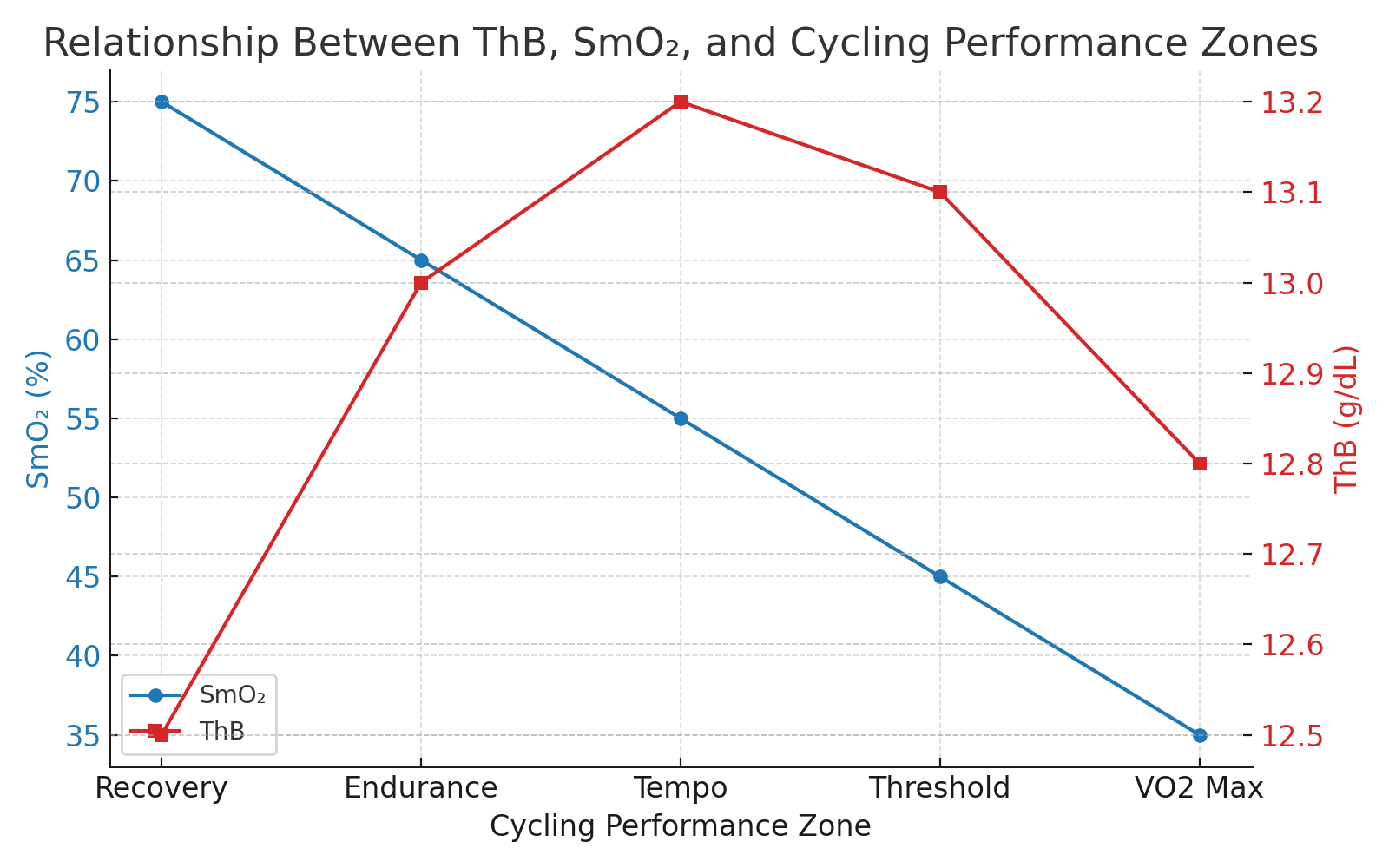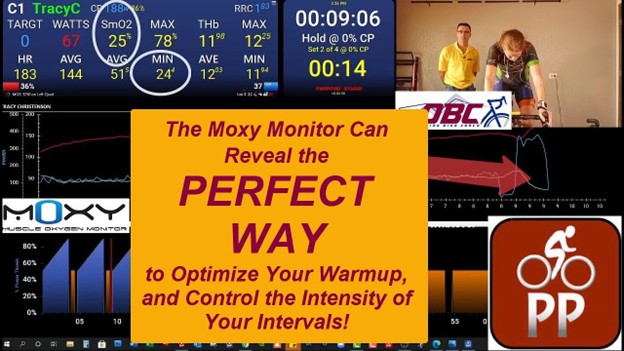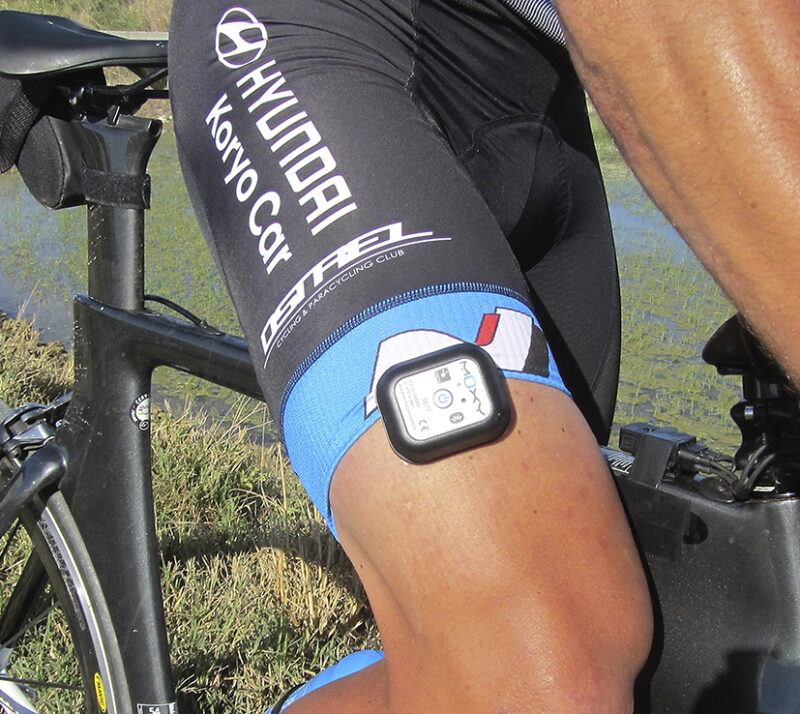
How Muscle Oxygen Data Can Make You a Better Cyclist
When it comes to cycling, we all know that training hard can make you faster. But what if I told you that riding easier — and tracking your muscle oxygen levels — could actually help you get stronger over time? That’s where the Moxy SmO₂ sensor comes in.
In this post, we’ll break down what SmO₂ is, why it matters for your base training, and how to use it to make every ride count. Don’t worry — no PhD required.
What Is SmO₂?
SmO₂ stands for Saturated Muscle Oxygen — basically, how much oxygen is available in your muscles at a given moment. It measures the percentage of oxygen available in your muscles in real time, often using a muscle oxygen sensor like Moxy. It shows the balance between oxygen delivery and oxygen use during exercise. Tracking SmO₂ while cycling helps identify when your muscles are working aerobically, approaching fatigue, or recovering, allowing you to adjust pacing and intensity on the fly. Over time, analyzing SmO₂ trends can guide smarter training, improve endurance, and maximize power output without overtraining..
Think of it like a car battery:
- Volts (SmO₂) = Available oxygen
- Amps (ThB) = How much oxygen-rich blood you can deliver
When you ride harder, you use up more oxygen (volts drop). When you ride easier or recover, oxygen levels rise again (volts go up).
When you ride harder, ThB will go UP initially, as your heart and lungs push to provide oxygen so that the muscles can contract, but as intensity and fatigue accumulate, ThB will start to go DOWN. You can delay this ThB decline through training, hydration, and nutrition, both acutely and empirically.
Why Base Training Is the Perfect Time to Use SmO₂
Base training means riding at a comfortable pace — the kind where you can chat with a friend without gasping for air. This isn’t “lazy riding.” It’s where your body learns to use oxygen more efficiently, build endurance, and recover faster between hard efforts.
With a Moxy sensor, you can actually see this happening.
Here’s the typical pattern:
- Start of the ride – SmO₂ is moderate (around 30–60%). Your body is still waking up.
- Warm-up – SmO₂ might dip slightly as muscles start working.
- After 20–30 min – Blood vessels dilate, oxygen delivery improves, and SmO₂ climbs to your “sweet spot” for base riding.
When you stay in that sweet spot, you’re getting maximum aerobic benefits without overtaxing your system.

Finding Your SmO₂ “Sweet Spot”
Over time, you’ll learn what SmO₂ numbers work best for you. For example, here are my personal zones:
- 70%+ – Muscles are fully resupplied with oxygen, ready for another effort.
- 40–70% – Ideal base training range (efficient and sustainable).
- 20–25% – Threshold work (hard, but not all-out).
- Below 20% – VO₂max territory (unsustainable for long).
Your numbers may differ, but once you find them, you can train with surgical precision. My training helps you identify your unique thresholds, and pairs them with traditional heart rate, wattage, and HRV (heart rate variability). We can even determine whether your Vo2 is going up through this base training!
What About ThB?
ThB, or Total Hemoglobin, measures the total amount of hemoglobin in the muscle tissue being monitored, typically with a muscle oxygen sensor like Moxy. Hemoglobin carries oxygen in the blood, so ThB reflects your muscles’ oxygen transport capacity. Tracking ThB during cycling can reveal how well your body delivers oxygen at different intensities, highlight blood flow or hydration changes, and show how efficiently you recruit muscle fibers. By monitoring ThB trends alongside SmO₂, cyclists can fine-tune training zones, sustain optimal efforts longer, and improve overall aerobic performance.
Total Hemoglobin (ThB) is another number the Moxy gives you. It’s like tracking how many “delivery trucks” are carrying oxygen to your muscles.
If your SmO₂ starts dropping but ThB is rising, it could mean you’re running low on carbs and your body is switching fuel sources. I often see this after about an hour of riding fasted — SmO₂ dips, ThB rises, and I know it’s time to eat if I want to keep performance up.


Why This Matters for Your Rides
When you understand SmO₂ and ThB, you can:
- Pace yourself better on long rides
- Avoid overtraining during base season
- Spot when you need fuel or hydration
- Get the most from easy rides instead of just “spinning”
And the best part? It makes training more fun. You’re not guessing anymore — you’re watching your body’s real-time response.
A Final Thought
You don’t have to stare at numbers all ride long. But checking SmO₂ during your warm-up and a few key moments throughout the ride can give you incredible insights. Once you know your Moxy zones, you can ride smarter, recover better, and hit your hard workouts with more power.
So grab your Moxy, track your oxygen, and remember — sometimes the smartest way to get faster is to slow down.
🚴♂️ Ride easy. Train smart. Get stronger.




